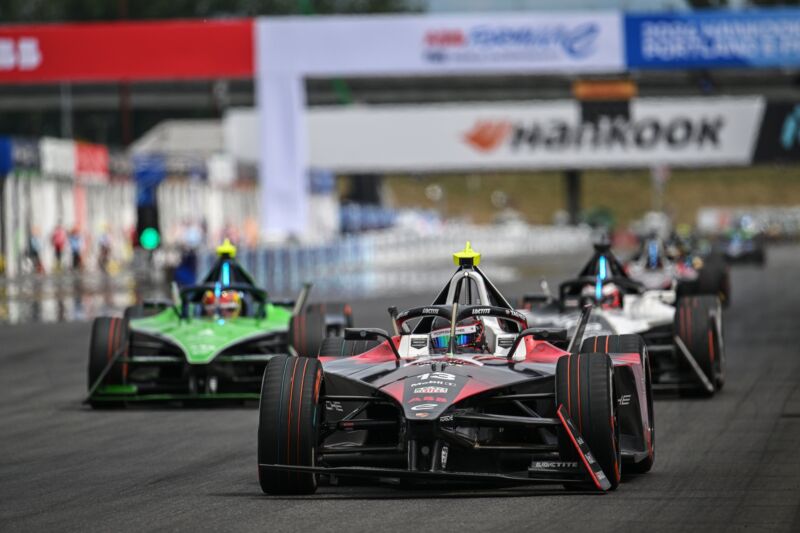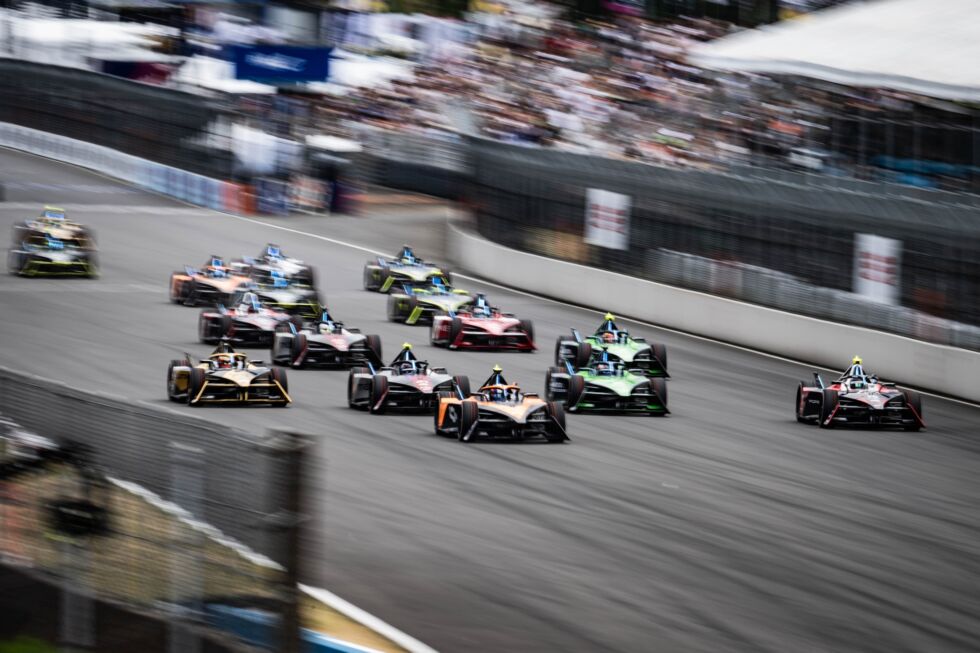
Sam Bagnall/Formula E
PORTLAND, Ore.—Formula E concludes its 10th series with a pair of races in London this weekend. It was a competitive manufacturers’ championship between Porsche and Jaguar. This weekend, seven drivers will battle it out for the drivers’ title after a doubleheader in Portland on June 29-30 that saw cars race five abreast down the main straight and reach the highest top speeds of the season. This was Formula E’s second visit to the scenic Portland International Raceway, and Ars spoke to some of the sport’s greats to hear what they think is going well there and where the technical evolution of the cars is headed.
Formula E has come a long way since 2014. Back then, the cars raced exclusively in city centres, so they were slow to start with. And even as they matured, they had too small a battery pack to cover even a relatively short race distance. There was a major upgrade in 2018 with the start of season five, with the Gen2 car now having battery packs that are sufficient for races of 45 minutes plus a lap. The Gen2 car raced well too, and even put on a better show in Monaco than Formula 1 has managed in decades.
We expected another big improvement in lap times when the Gen3 car arrived at the start of last season. The Gen3 car had a lot less weight and a lot more power, but also a change of tire supplier. Originally intended to last multiple race weekends, the rubber Hankook supplied this season and last year has a lot less grip than the Michelins it replaced. That has kept the corner speeds relatively low and made the cars even more difficult to control.

Photo: Sam Bagnall/Getty Images.
That’s not necessarily a bad thing, as the series has always designed its rules to make life difficult for drivers and teams. For example, even though the batteries are now bigger, they still don’t hold enough charge to cover a race distance without careful energy management. But while race officials get data-rich telemetry streams from all the cars during a race, teams have to rely on each driver to monitor his own charge status and radio that back to the engineers in the garage so the boffins can calculate the optimal strategy.
More technical changes are in the pipeline. In 2025 and 2026, the series will switch to the Gen3 Evo car, which will feature on-demand four-wheel drive and more grip from better tires, among other things. Meanwhile, everyone in Formula E has been thinking hard about Gen4, which is due to arrive in season 13.
What worked?
I asked Formula E CEO Jeff Dodds, as well as a number of team principals, to start with their own fanfare: what does Formula E do well? “We just announced our Gen3 Evo car, which does 60 mph in 1.8 seconds, and we’re still an early-stage company, only 10 years old, and we’re still playing with early-stage technology. So I think a huge strength of ours is how that technology improves the performance of the car,” Dodds said.

Simon Galloway/Formula E
McLaren team principal Ian James, who previously led Mercedes to a Formula E championship before it left the sport, was proud of how far Formula E has come in the past decade. “Gen2 really saw a step forward in that regard and a professionalisation of the whole series. I think with Gen3 we're really starting to unlock the performance potential of electric motorsport. And we're going to see that go even further in Gen3 Evo,” James said.
According to Nissan team principal Tommaso Volpe, Formula E's great strength is that it is a relevant arena for electric vehicle R&D. “As a representative of a major car manufacturer in the sport, I think the greatest strength is how relevant it is to a major transformation that is happening in mobility… using electrification as a key technology,” Volpe said. “That's something motorsport can't claim. They have other strengths, but they can't claim to be so relevant, purely from an R&D perspective,” Volpe said.
For a company like Nissan, the main benefit remains getting EV technology in front of viewers, something Formula E’s deal to stream races live on Roku has undoubtedly helped. But there are other benefits to getting involved. “You can’t use the same engine, but the efforts we put into developing a Formula E car, to maximize the energy efficiency of the hardware — so the materials we use, the solutions, the design — is something that’s absolutely relevant to the core business and you can transfer some of those ideas and experiences,” Volpe said.

